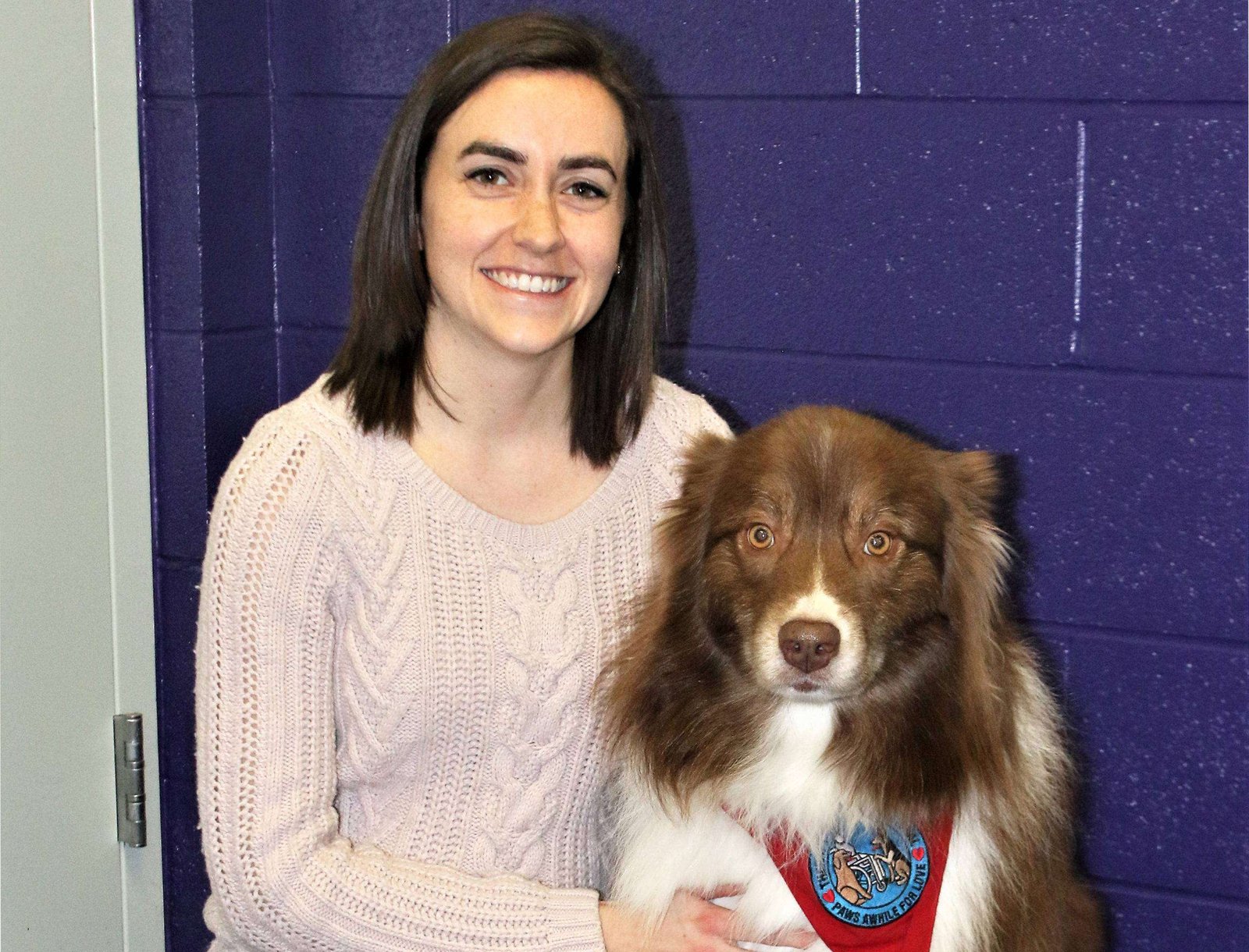
NEW STAFF MEMBER … SES Teacher Samantha Schmidt with therapy dog Charlie. (PHOTO BY BILL O’CONNELL, STAFF)
By: Bill O’Connell
His name is Charlie Schmidt and his first official day in the classroom at Swanton Elementary School (SES) was January 22, 2020. Any new student or even a new teacher will tend to stand out on their first day, but Charlie’s appearance drew far more attention than any new face ever could because he is a dog, an Australian Shepherd to be precise. He is also a therapy dog.
Charlie’s owner is Samantha Schmidt, an Intervention Specialist who has been at SES for six years. Soon after getting married, Ms. Schmidt and her husband decided to get a dog and put it through formal obedience training.
During this training, the trainer noticed Charlie’s calm demeanor and how easy he was to train and asked Ms. Schmidt if she would be interested in having him become a therapy dog. Ms. Schmidt and her husband then taught Charlie to perform therapy dog related tasks and were able to get him officially certified.
“When he became a therapy dog, we thought it would be great if he could come to school. We had heard of a lot of other (school) districts that had therapy dogs and how great it was,” said Ms. Schmidt. “So why not. Let’s try and get him into school.” She worked with SES Principal Kristi Molter and Swanton Superintendent Chris Lake who conducted their own research and was finally given the go-ahead.
Research findings published by Jerri Kropp and Mikaela Shupp, showed that there were three categories of therapeutic benefits that children, ages three-years-old to adolescence, emerged from time spent with a therapy dog. They were increased reading and language skills, social, emotional, and humane gains, and improved gross motor skills.
Kropp and Shupp went on to say, “Numerous studies have found that literacy skills can be improved from reading to dogs and that children gain confidence in reading and report an increased love of reading. Therapy dogs can also provide stability and comfort to children who are living in poverty or abusive homes. Caring for a classroom animal teaches responsibility, builds confidence, and gives children a sense of pride and accomplishment.”
Another important lesson the students learn is the difference between a “therapy” dog and a “service” dog. “That was something where we went around to all the classrooms and made sure to mention, because the kids need to know the difference why they can come pet Charlie and they can’t go pet service dogs,” said Ms. Schmidt.
“The difference is service dogs are meant for one person and they are trained for specific tasks for that one person. That dog is specifically trained to help that person with their disability. Therapy dogs are really just meant to go into an area and make people relax, make people smile, make people feel better and forget whatever problems they’re having and make them feel happy,” she explained.
As herding dogs, Australian Shepherds were bred to round up livestock. Which, would make you think Charlie could be very useful in bringing the students back into the building at the end of recess, but Ms. Schmidt said that trait has been trained out of him.
Of course, the SES students are thrilled to have Charlie as part of their daily school experience. “I was surprised at how easy the kids have made it with just enjoying him and learning about him and wanting to interact with him. They have been so great,” said Ms. Schmidt.
As writer and photographer Roger Caras once said, “Dogs are not our whole life, but they make our lives whole.”
Bill can be reached at publisher@villagereporter.com
